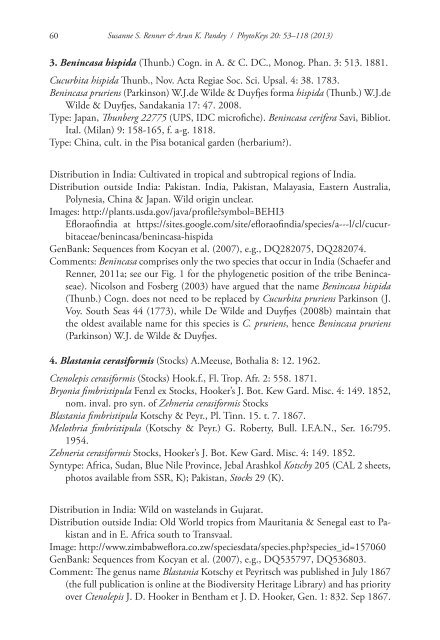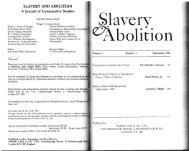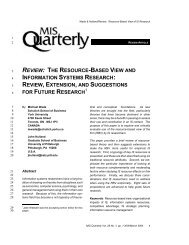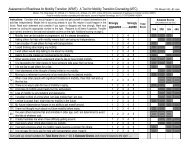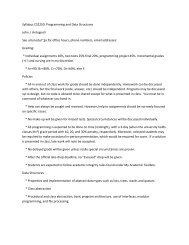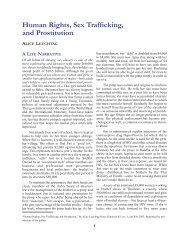The Cucurbitaceae of India: Accepted names, synonyms ...
The Cucurbitaceae of India: Accepted names, synonyms ...
The Cucurbitaceae of India: Accepted names, synonyms ...
Create successful ePaper yourself
Turn your PDF publications into a flip-book with our unique Google optimized e-Paper software.
60<br />
Susanne S. Renner & Arun K. Pandey / PhytoKeys 20: 53–118 (2013)<br />
3. Benincasa hispida (Thunb.) Cogn. in A. & C. DC., Monog. Phan. 3: 513. 1881.<br />
Cucurbita hispida Thunb., Nov. Acta Regiae Soc. Sci. Upsal. 4: 38. 1783.<br />
Benincasa pruriens (Parkinson) W.J.de Wilde & Duyfjes forma hispida (Thunb.) W.J.de<br />
Wilde & Duyfjes, Sandakania 17: 47. 2008.<br />
Type: Japan, Thunberg 22775 (UPS, IDC micr<strong>of</strong>iche). Benincasa cerifera Savi, Bibliot.<br />
Ital. (Milan) 9: 158-165, f. a-g. 1818.<br />
Type: China, cult. in the Pisa botanical garden (herbarium?).<br />
Distribution in <strong>India</strong>: Cultivated in tropical and subtropical regions <strong>of</strong> <strong>India</strong>.<br />
Distribution outside <strong>India</strong>: Pakistan. <strong>India</strong>, Pakistan, Malayasia, Eastern Australia,<br />
Polynesia, China & Japan. Wild origin unclear.<br />
Images: http://plants.usda.gov/java/pr<strong>of</strong>ile?symbol=BEHI3<br />
Eflora<strong>of</strong>india at https://sites.google.com/site/eflora<strong>of</strong>india/species/a---l/cl/cucurbitaceae/benincasa/benincasa-hispida<br />
GenBank: Sequences from Kocyan et al. (2007), e.g., DQ282075, DQ282074.<br />
Comments: Benincasa comprises only the two species that occur in <strong>India</strong> (Schaefer and<br />
Renner, 2011a; see our Fig. 1 for the phylogenetic position <strong>of</strong> the tribe Benincaseae).<br />
Nicolson and Fosberg (2003) have argued that the name Benincasa hispida<br />
(Thunb.) Cogn. does not need to be replaced by Cucurbita pruriens Parkinson (J.<br />
Voy. South Seas 44 (1773), while De Wilde and Duyfjes (2008b) maintain that<br />
the oldest available name for this species is C. pruriens, hence Benincasa pruriens<br />
(Parkinson) W.J. de Wilde & Duyfjes.<br />
4. Blastania cerasiformis (Stocks) A.Meeuse, Bothalia 8: 12. 1962.<br />
Ctenolepis cerasiformis (Stocks) Hook.f., Fl. Trop. Afr. 2: 558. 1871.<br />
Bryonia fimbristipula Fenzl ex Stocks, Hooker’s J. Bot. Kew Gard. Misc. 4: 149. 1852,<br />
nom. inval. pro syn. <strong>of</strong> Zehneria cerasiformis Stocks<br />
Blastania fimbristipula Kotschy & Peyr., Pl. Tinn. 15. t. 7. 1867.<br />
Melothria fimbristipula (Kotschy & Peyr.) G. Roberty, Bull. I.F.A.N., Ser. 16:795.<br />
1954.<br />
Zehneria cerasiformis Stocks, Hooker’s J. Bot. Kew Gard. Misc. 4: 149. 1852.<br />
Syntype: Africa, Sudan, Blue Nile Province, Jebal Arashkol Kotschy 205 (CAL 2 sheets,<br />
photos available from SSR, K); Pakistan, Stocks 29 (K).<br />
Distribution in <strong>India</strong>: Wild on wastelands in Gujarat.<br />
Distribution outside <strong>India</strong>: Old World tropics from Mauritania & Senegal east to Pakistan<br />
and in E. Africa south to Transvaal.<br />
Image: http://www.zimbabweflora.co.zw/speciesdata/species.php?species_id=157060<br />
GenBank: Sequences from Kocyan et al. (2007), e.g., DQ535797, DQ536803.<br />
Comment: <strong>The</strong> genus name Blastania Kotschy et Peyritsch was published in July 1867<br />
(the full publication is online at the Biodiversity Heritage Library) and has priority<br />
over Ctenolepis J. D. Hooker in Bentham et J. D. Hooker, Gen. 1: 832. Sep 1867.


